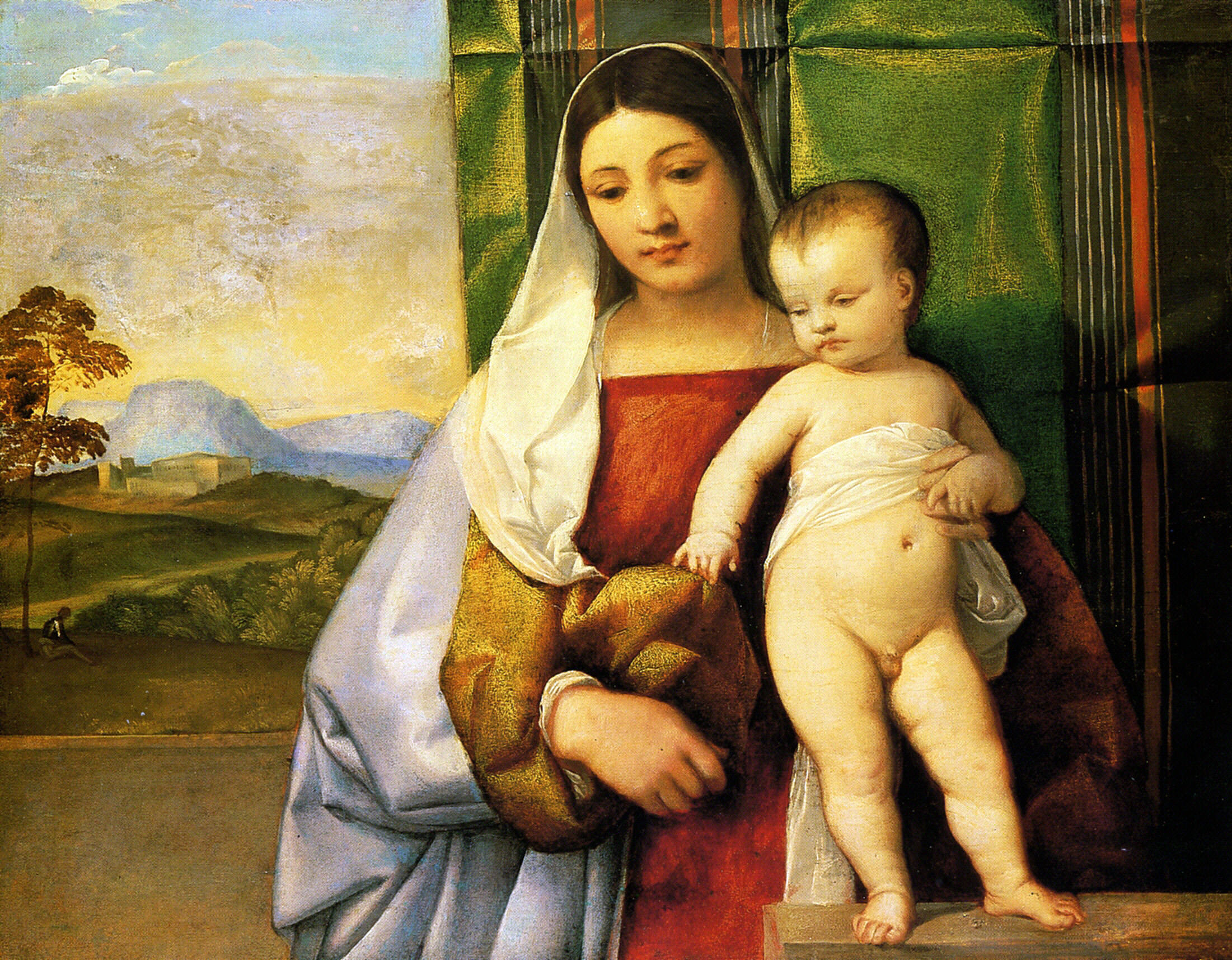Titian, Tiziano Vecelli - The Gipsy Madonna 1510-1511
 |
 |
 |
 |
 |
 |
 |

The Gipsy Madonna 1510-1511
83x65cm oil on canvas
Kunsthistorisches Museum, Vienna, Austria
The image is only being used for informational and educational purposes
<< Previous G a l l e r y Next >>
From Wikipedia, the free encyclopedia:
The Gypsy Madonna is a panel painting of the Madonna and Child in oils of about 1510–11, by Titian, now in the Kunsthistorisches Museum in Vienna. It is a painting made for display in a home rather than a church.
It is close to compositions by Titian's former master Giovanni Bellini, especially, when reversed, one of 1509 in the Detroit Institute of Arts, and has been seen as a challenge to the much older master, by taking on a characteristic compositional formula of his. The style is much indebted to Giorgione, and it was often attributed to him in the earlier 20th century. This is especially so in the "harmonious fullness and slow gravity of form" of the figure of the Virgin, which uses a type of figure Titian did not repeat in later Madonnas. The landscape is virtually identical to the left-most section of the background of the Dresden Venus, traditionally thought to have been begun by Giorgione, but with the landscape done after his death in 1510 by Titian.
The right background is occupied with a cloth of honour, painted with careful attention to its folds (they were often stored folded up). These were hung behind thrones, as in very many paintings of enthroned Madonnas, and here it implies that an unoccupied throne is out of sight to the right. The Bellini in Detroit uses the same device. The composition is therefore a half-way stage between the older more formal enthroned Madonnas and newer compositions with the Virgin and Child shown informally in a landscape setting. Madonnas by Bellini and his followers had for some time been showing small glimpses of landscape to the sides of the painting, usually cut off by a parapet lower down, and the formula here, using a horizontal "landscape" format, develops this.